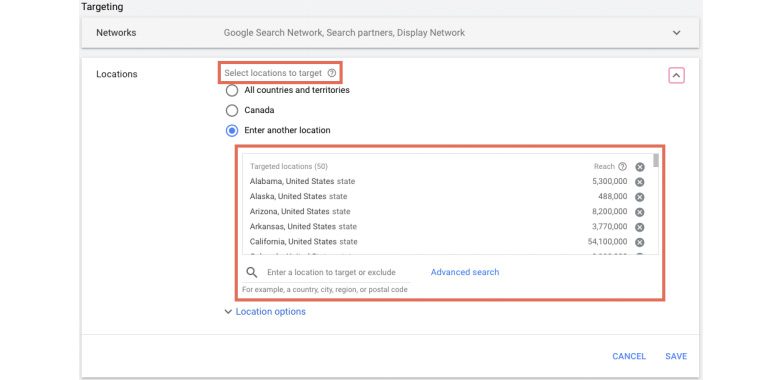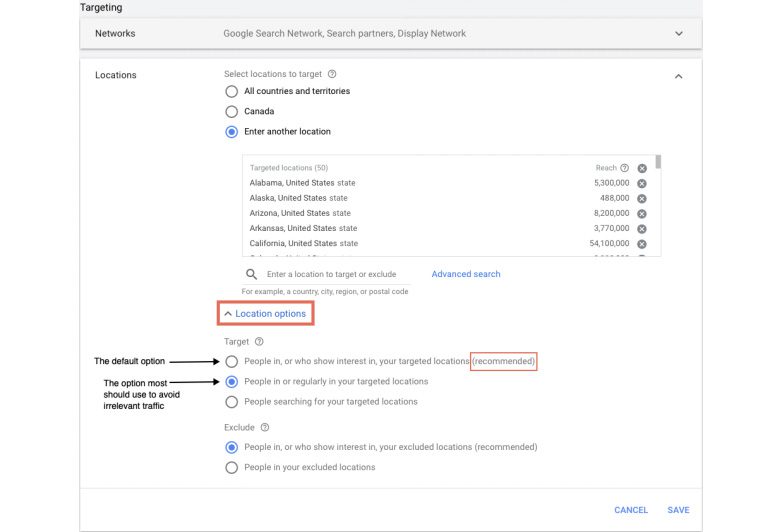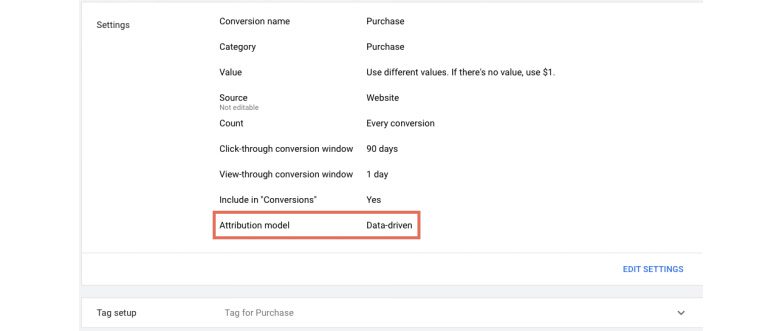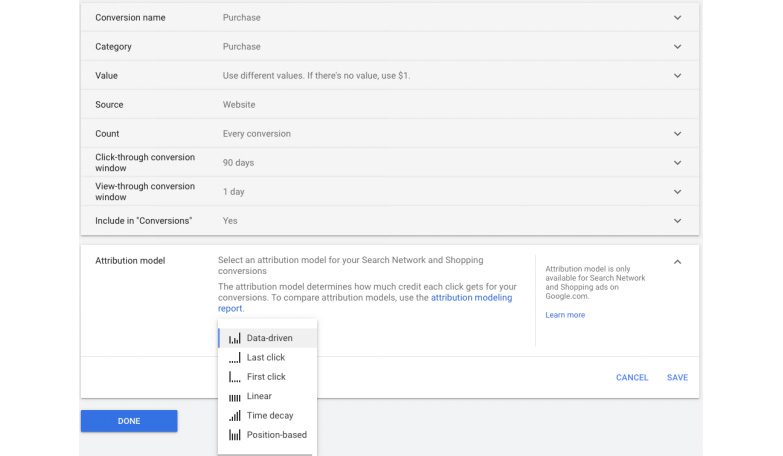Three Google Ads issues that (can) cause wastage & missed opportunities
July 16, 2020 |
Google Ads should come with a warning label. The type you find on an electrical appliance, that would read:
Warning – may cause explosive business growth, or,
waste a load of your money if you’re not careful.
I’m sure there’s something akin to that in their small print, not that I’ve ever read it. I’ve worked with Google Ads (or AdWords, as it was then) since 2006. I stopped being an ‘operator’, not by desire but more so by force of nature. In around 2014, a year after this company was founded, I had to do ‘owner’ stuff while our growing team took over the ‘PPC’ stuff. In my years as an operator and PPC agency owner, I’ve seen and committed my fair share of mistakes.
As the team likes to joke, I don’t actually do any ‘work’ anymore. I spend most of my time writing content, public speaking or consulting with businesses. I’d estimate that I conduct an average of 5-10 client consultations or audits per week, which would put my personal interactions with businesses at somewhere between 250-500 per year. During these consultations and audits, I see the same mistakes with Google Ads over and over again, which are often hidden pitfalls or misunderstood concepts.
Therefore, learning from my own mistakes and consultations, this blog post will address the three most common mistakes, issues or hidden pitfalls that cause wasted budget or missed opportunity. It’s important to note that some of these are subjective and situational.
Issue #1: Advanced Location Targeting
Location targeting for Google Ads is set at the campaign level and can be targeted by country, province, region, state, city, town or zip code. You can target a radius around your chosen location, too. For example, a local auto repair shop might target their town plus 10 miles around it.
When you navigate to location settings in your Google Ads campaigns, here is what you see:

Seems pretty straightforward, right? It literally says, “Select locations to target” – so most users would follow that instruction, hit save and consider the job done. Not so. If we click the ‘Location options’ link at the bottom, it opens up the most important aspect of location targeting:

As you’ll see from the annotations, the default ‘(recommended)’ option is, “People in, or who show interest in, your targeted locations”. You have to know to look for this menu and select, “People in or regularly in your targeted locations” if you only want people in your target location to see your ads.
It is beyond me as to why Google does this and I’m not here to presume to know or to cast aspersions. I can see the merit in the default option in its own right, but it shouldn’t be the default option. The default option should be people who are actually in your target location, and the optional, different option, should be people who are interested in your location.
The obvious flaw with this default option is that it runs the risk of showing your ads to people who are not in your target location and would therefore never (want to or be able to) buy from you, resulting in wasted clicks and budget.
There are certain use-cases for it – for example, if you’re a car rental company based in Toronto and you get a lot of tourist business, it’s OK if someone in the UK sees your ad if they’ve searched for ‘car rental Toronto’ because they’re planning to make reservations for an upcoming trip to Toronto. But I would argue that’s a comparatively rare use-case when you consider that most businesses only do business with those in their target location.
If you’re an e-commerce retailer and only ships to the US, you don’t want anyone outside of the US to see your ads. But if you use the default targeting setting and Jimmy from Germany is ‘interested’ in the US (by whatever measure Google determines what its users are ‘interested’ in), he could see and click on your ad from Germany.
If you’re a veterinary practitioner in Jacksonville, Florida, it’s unlikely that anyone outside of your immediate vicinity will visit your clinic. Yet if you use the default setting anyone in the world might see your ad. I could go on for quite some time with use-cases here – but I think you get the message by now.
We’ve found that this default location setting can wreak havoc on any Google Ads campaign type, but particularly so with display campaigns. Display campaigns (of any sort – including Remarketing) tend to suffer the most from spam and low-quality traffic, and when you couple that known-issue with getting traffic from countries you don’t serve the overall issue is exasperated.
In summary – using the default setting isn’t in itself a mistake. There are some plausible reasons that you might do this deliberately, but if you’re getting beyond ‘acceptable’ levels of spam, traffic, interest or calls from outside of your target location, this is probably the reason why.
Issue #2: Single-Click Attribution
Until around 2018 the internet worked on a single-click attribution basis, most commonly known as first-click or last-click attribution. This means that even if multiple elements contributed to a conversion (a lead, phone call, purchase, visits, etc…), that only one of those elements would get the credit for the conversion.
I use the word ‘element’ because there are so many different things that can lead to a conversion, including:
- Users visiting multiple times on different devices
- Users visiting multiple times on different days of the week
- Users visiting multiple times from different campaign types (search, display, video)
- Users visiting multiple times from different sources (PPC, Organic, Direct)
This list could go on for some time, but you get the idea. A single conversion rarely comes from a user’s first and only interaction with your brand online. So why would only one element get 100% of the credit for a conversion? This makes good things look better than they are and the bad things look worse than they are. In turn, this leads to you making the wrong optimization and budgetary allocation decisions – wasting budget and missing opportunity.
This is why fractional attribution was introduced in 2018, to allocate credit for a single conversion to the various elements that contribute to a conversion. Yet I would estimate that at least 50% of the Google Ads accounts I audit every month are still using single-click attribution.
If you navigate to your Google Ads conversion settings you’ll see this screen:

If you click edit settings and open up the attribution item you’ll see this:

You’ll see there are six attribution options to choose from. For reasons that are once again beyond my comprehension, Last click and First click are still in there – which we’ll discount for reasons already discussed. This leaves four ‘fractional’ attribution options to select from:
- Data-driven: the most powerful and accurate option that assigns weighted credit throughout a user’s journey of interactions. Exclusive to accounts with 500+ conversions per month, so it’s great but not accessible to most advertisers.
- Linear: my favourite option where data-driven is not possible. It gives equal credit to each interaction. To use a simple example; if a user first visits your site from a video ad on YouTube on a mobile device, and comes back the next day via a remarketing banner on a laptop device and completes the purchase, the two different campaign types (video and display remarketing) would get 50% of the credit each (or, 0.50 conversions), as would the two different devices.
- Time decay: my least favourite fractional attribution model because it’s most similar to the last click. It does give credit to multiple interactions throughout the user journey, but it gives the most credit (heavily weighted) to the last interaction in the process. I feel like this was created as a half-way house for those who are resistant to leaving the last click in the past.
- Position-based: an odd one that gives 40% of the credit to the first and last click in the journey, and 20% to any clicks that happen in-between.
You can use the attribution modelling report to see how your conversion data would change when you switch from one type to another. It is not recommended to switch these attribution models regularly – so pick yours wisely and stick to it.
To hammer one final nail in the coffin of single-click attribution, imagine a relay race in the Olympics. The fourth runner picks up the baton and crosses the finish line in the first place, but does that mean the three runners in the relay before this final action count for nothing?
Issue #3: Too Many Ads (half a gold star)
I commonly see too many ads in an ad group. When you have too many ads, each ad doesn’t get served enough impressions to build any meaningful data. If you have 5,000 impressions per month, what is the sense in those impressions being shared by 10 ads? Each ad gets an average of 500 impressions which is nowhere near enough to form an accurate critical mass of data. The CTR readings will be all of the spectra, along with other key metrics, because they’re percentages based on too small a data set.
To explain, if an ad with 500 impressions gets 10 clicks it has a 2% CTR (click-through rate). If another ad gets 5 more clicks it all of a sudden has a CTR of 3%. In the PPC world, a difference of one whole percent in CTR is enormous. Is the second ad really 50% better than the first ad, or, are the percentages skewed by insufficient data volumes? Of course, the truth is the latter, but if you fall into this trap you’ll lean towards the ‘better’ ads and potentially optimize away from creative that could actually be better.
Present best-practice is to have one responsive ad and one or two conventional ads per ad group. A responsive ad is a Responsive Search Ad (RSA) or Responsive Display Ad (RDA), depending on the campaign type, which are Google’s machine-learning ads that use multiple elements to form combinations for testing much faster than a human could with conventional ads. In search campaigns, a conventional ad is an expanded text ad, where you manually control the entire ad’s static headline and descriptions. The overall idea is to have this mix until the responsive ad has gone through its testing and outperforms the safety net of the conventional ads.
The issue of having too many ads usually comes from a good intention poorly executed. We are taught that testing the creatives is important, so we test lots of creative. To avoid over-testing creative and diminishing results takes discipline.
Conclusion:
Knowing what to look for is 99% of the battle in successfully creating and managing Google Ads or PPC campaigns. The key theme from all of these pointers is that you need reliable data to optimize your campaigns and avoid wasting your budget or missing out on opportunities by taking a wrong turn.












